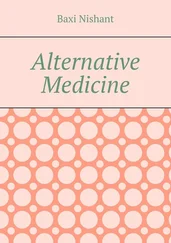Like many people who have spent time in today’s health-care system, my experiences have been largely disappointing.
I was born with clubfeet. Within hours, both feet were put in casts; the left foot healed; the right didn’t. When I was five years old, a surgical procedure was performed on my right foot; one of the first of its kind, my case was later written up in a medical journal. The good news is that my right foot no longer turns awkwardly down and inward. The bad news is that walking is always somewhat painful for me.
While in medical school, I volunteered for a twenty-five-mile walkathon for the National Multiple Sclerosis Society. After completing the walk, the pain in my foot was so bad I had to use crutches for a few days. I visited an orthopedist, who told me I had severe osteoarthritis and that my X-ray looked like that of a seventy-year-old man. I was twenty-four. For most of my adult life, I’ve tried conventional nonnarcotic pain medicines without relief.
When I was in my thirties, I noticed a small dark spot—no bigger than the head of a pin—on the front of my nose. I ignored it. Twelve years later, my wife suggested I have it removed. The procedure was fast and painless. But a few days later, the dermatologist called with some bad news. He had received a report from the pathologist. The diagnosis: metastatic malignant melanoma. A death sentence.
I panicked and immediately called the pathologist. “This diagnosis doesn’t make any sense,” I pleaded. “How could I have a metastatic lesion on only one part of my body that has remained unchanged for more than a decade? And where’s the primary cancer, the place from which the metastasis had supposedly spread? Doesn’t this make me the longest-living survivor of untreated metastatic melanoma in history?!” The pathologist was sympathetic but unfazed. The diagnosis was what it was. If I wanted her to, however, she was willing to send my biopsy to the nation’s foremost expert on melanoma: a dermatopathologist in New York City. A few weeks later, he called with his diagnosis: metastatic malignant melanoma. He patiently explained that, given where the malignant cells were and what they looked like, it couldn’t be anything else.
For the next two years, I went to the dermatology clinic at the University of Pennsylvania, getting periodic physical examinations, chest X-rays, and blood tests looking for evidence of further metastases. None were found. Also, no one could find the original site from which my melanoma had supposedly spread. A mystery, they claimed.
Later, my wife, who is also a doctor, sent my biopsy to a dermatologist friend of hers, who said that I didn’t have malignant melanoma—my real diagnosis was cutaneous blue nevus syndrome, a benign disorder that mimics melanoma. I was happy to be done with it. But two years of thinking that I was suffering from a fatal illness had been hell.
When I was in my early fifties, a sharp, persistent pain in my left knee made it difficult to walk. Unable to tolerate it any longer, I visited an orthopedist, who diagnosed a partially torn medial meniscus (the cartilage in the knee that keeps bone from rubbing against bone). The surgery will be simple, he explained, with a full recovery in a few days. But in the postoperative haze of anesthesia, I learned that it hadn’t been that easy. The orthopedist explained that my problem wasn’t a torn meniscus after all; it was a loss of cartilage behind my kneecap. Instead of minor knee surgery, I had just undergone microfracture surgery, where small holes are drilled into bone. The recovery wasn’t going to be a few days—it was going to be a year. The miscalculation didn’t seem to surprise or upset the orthopedist. But it upset me.
By my mid-fifties, consistent with my age, I began to suffer symptoms of an enlarged prostate. Now I was in the world of urologists, which meant I would periodically get my PSA level checked. PSA, or prostate-specific antigen, is supposedly a predictor of prostate cancer. But the more I read studies about PSA, the more I realized it isn’t a very good predictor at all. Even biopsies of the prostate are confusing. As it turns out, most men with prostate cancer die with the cancer, not from it. Which means that most men with prostate cancer have needless surgery. And the surgery is brutal, leaving many incontinent and impotent. As a consequence, urologists have varying opinions about how to avoid prostate cancer.
During these misadventures, I’ve gotten a lot of advice from a lot of people. Some have gone as far as to suggest I abandon conventional medicine. They said I should take saw palmetto for my prostate and chondroitin sulfate and glucosamine for my foot and knee pain—all readily available without a prescription. They told me that I shouldn’t have seen an orthopedist—I should have seen an acupuncturist or a chiropractor—and that I shouldn’t have gone to a urologist for prescription drugs: I should have gone to a naturopath for something more organic, more natural. They urged me to stop being so trusting of modern medicine and to once and for all take control of my health—to leave a system that was clearly flawed.
So I went to a health food store and bought saw palmetto, chondroitin sulfate, and glucosamine. But before I took them, I looked to see whether studies had been done showing they worked. The studies were large, internally consistent, well controlled, and rigorously performed. And the results were clear: saw palmetto didn’t shrink prostates, and chondroitin sulfate and glucosamine didn’t treat joint pain. Then I reviewed studies of acupuncture, naturopathy, homeopathy, and megavitamins, which also showed results far less amazing than my friends had led me to expect. Some therapies worked; most didn’t. And for those that did work, it was how they worked that was surprising.
Perhaps most concerning, I found that alternative therapies could be quite harmful. Chiropractic manipulations have torn arteries, causing permanent paralysis; acupuncture needles have caused serious viral infections or ended up in lungs, livers, or hearts; dietary supplements have caused bleeding, psychosis, liver dysfunction, heart arrhythmias, seizures, and brain swelling; and some megavitamins have been found to actually increase the risk of cancer. My experience wasn’t limited to reading medical journals. As head of the therapeutic standards committee at our hospital, I learned of one child who suffered severe pancreatitis after taking more than ninety different dietary supplements and another whose parents insisted on using an alternative cancer cure made from human urine.
What I learned in all of this was that, although conventional therapies can be disappointing, alternative therapies shouldn’t be given a free pass. I learned that all therapies should be held to the same high standard of proof; otherwise we’ll continue to be hoodwinked by healers who ask us to believe in them rather than in the science that fails to support their claims. And it’ll happen when we’re most vulnerable, most willing to spend whatever it takes for the promise of a cure.
The purpose of this book is to take a critical look at the field of alternative medicine—to separate fact from myth. Because the truth is, there’s no such thing as conventional or alternative or complementary or integrative or holistic medicine. There’s only medicine that works and medicine that doesn’t. And the best way to sort it out is by carefully evaluating scientific studies—not by visiting Internet chat rooms, reading magazine articles, or talking to friends.
INTRODUCTION Contents Title Page Dedication To all the science writers, science advocates, and science bloggers who have dared proclaim that the emperors of pseudoscience have no clothes Epigraph When religion was strong and science weak, men mistook magic for medicine. Now, when science is strong and religion weak, men mistake medicine for magic. —THOMAS SZASZ Prologue: Taking a Look at Alternative Medicine Introduction: Saving Joey Hofbauer Part I: Distrust of Modern Medicine 1. Rediscovering the Past: Mehmet Oz and His Superstars Part II: The Lure of All Things Natural 2. The Vitamin Craze: Linus Pauling’s Ironic Legacy Part III: Little Supplement Makers Versus Big Pharma 3. The Supplement Industry Gets a Free Pass: Neutering the FDA 4. Fifty-One Thousand New Supplements: Which Ones Work? Part IV: When the Stars Shine on Alternative Medicine 5. Menopause and Aging: Suzanne Somers Weighs In 6. Autism’s Pied Piper: Jenny McCarthy’s Crusade 7. Chronic Lyme Disease: The Blumenthal Affair Part V: The Hope Business 8. Curing Cancer: Steve Jobs, Shark Cartilage, Coffee Enemas, and More 9. Sick Children, Desperate Parents: Stanislaw Burzynski’s Urine Cure Part VI: Charismatic Healers Are Hard to Resist 10. Magic Potions in the Twenty-First Century: Rashid Buttar and the Lure of Personality Part VII: Why Some Alternative Therapies Really Do Work 11. The Remarkably Powerful, Highly Underrated Placebo Response 12. When Alternative Medicine Becomes Quackery Epilogue: Albert Schweitzer and the Witch Doctor: A Parable Notes Selected Bibliography Acknowledgments About the Author Also by Dr Paul Offit Copyright About the Publisher
Читать дальше

![Джейн Остин - Sense and Sensibility [С англо-русским словарем]](/books/26612/dzhejn-ostin-sense-and-sensibility-s-anglo-thumb.webp)
![Edzard Ernst - Trick or Treatment. The Undeniable Facts about Alternative Medicine [Electronic book text]](/books/151762/edzard-ernst-trick-or-treatment-the-undeniable-fa-thumb.webp)









